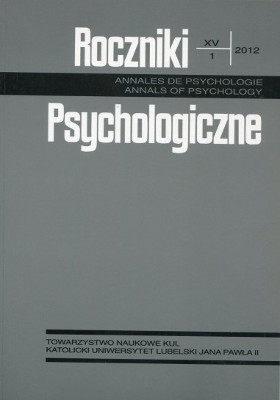Perception without sensations. The “New Psychology” of J. J. Gibson
Abstract
The paper discusses the development of the new – in 1950-1980 – approach to the visual perception proposed by the American psychologist James J. Gibson. He is known from his skepticism about the category of sensation that emerged within the context of idealistic philosophy, and from his ecological theory of perception, wherein the boundary between the subject and environment is obliterated. However, it is not always noticed that while referring to the Gestalt psychology he formulated a lot of original ideas. His detailed analysis of the ecosystem concept makes him more akin to the Gestalt theorists, despite the fact that his criticism of the Gestalt category seems to suggest the very opposite.
References
Gibson, J. J. (1947). Motion picture testing and research. Washington: U.S. Government Printing Office. Aviation Research Reports, 7.
Gibson, J. J. (1950). The perception of the visual world. Boston: Houghton Mifflin.
Gibson, J. J. (1960/1982a). The information contained in light. W: E. Reed, R. Jones (red.), Reasons for realism: Selected essays of James J. Gibson (s. 53-60). London: LEA 1982.
Gibson, J. J. (1960/1982b). Ecological optics. W: E. Reed, R. Jones (red.), Reasons for realism: Selected essays of James J. Gibson (s. 61-75). London: LEA 1982.
Gibson, J. J. (1966). The senses conscidered as perceptual systems. Boston: Houghton Mifflin.
Gibson, E. J. (1969). Perceptual learning and development. New York: Appleton-Century-Crofts.
Gibson, J. J. (1971). Materiały nieopublikowane: Gibson, February 1971; www.trincoll.edu/depts/ecopsyc/perils/folder5/prelim.html (2 II 2010).
Gibson, J. J. (1979). The ecological approach to visual perception. Boston: Houghton Mifflin.
Gibson, J. J., Mowrer, O. H. (1938). Determinants of the perceived wertical and horizontal. Psychological Review, 45, 300-323.
Gregory, R. L., Colman, A. M. (red.) (2002). Czucie i percepcja. Tł. M. Siemiński. Poznań: Zysk i S-ka Wydawnictwo.
Grow, M. C., Armstrong, H. G. (red.) (1941). Fit to fly. New York: Appleton-Century.
Maruszewski, T. (2001). Psychologia poznania: sposoby rozumienia siebie i świata. Gdańsk: Gdańskie Wydawnictwo Psychologiczne.
Noë, A. (2004). Action in perception. Cambridge: MIT Press.
Reed, E., Jones, R. (red.) (1982). Reasons for realism: Selected essays of James J. Gibson. London: LEA.
Reed, E. (1998). James J. Gibson and the psychology of perception. New Haven: Yale University Press.
Rock, I. (1985). The logic of perception. Cambridge: MIT Press.
Schetz, A. (w druku). Minimalistyczny reprezentacjonizm ekologicznej teorii percepcji.
Uchnast, Z. (1994). Reinterpretacja założeń psychologii postaci: od modelu całości jako symbolicznej figury do modelu całości naturalnej jako ekosystemu. Roczniki Filozoficzne, 42, 4, 33-70.
Copyright (c) 2012 Roczniki Psychologiczne

This work is licensed under a Creative Commons Attribution-NonCommercial-NoDerivatives 4.0 International License.


